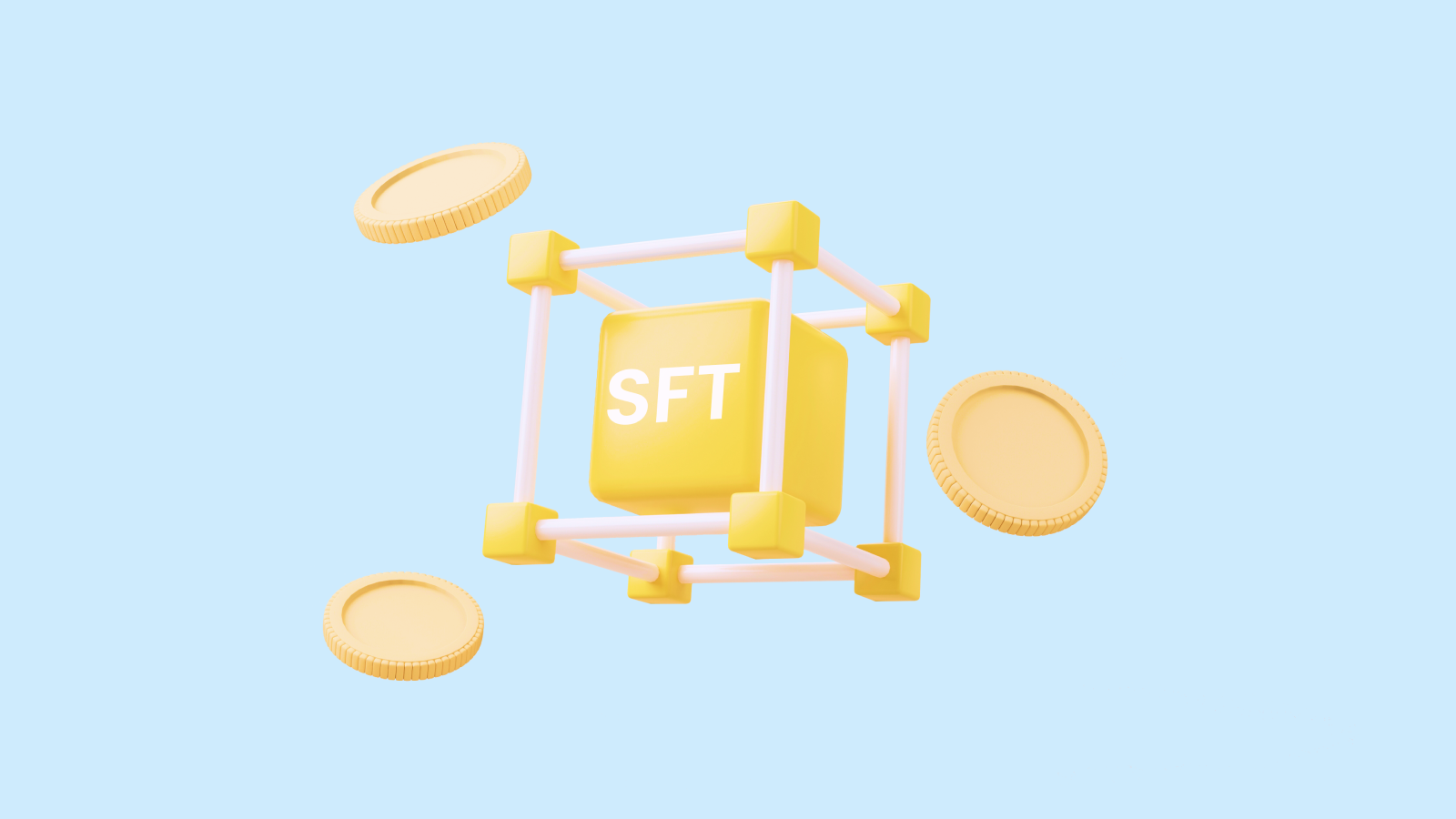Intro
So, we've already revealed what is hiding behind those strange words — a crypto coin, a token, an NFT, but wait, there is something else we've almost forgotten to talk about! That's an SFT or a semi-fungible token. We'll definitely find out some fruitful information about that thing soon, but first, let's uncover essential concepts.
Fungibility
Fungible tokens and assets aren't unique, and they are replaceable. We can have a look at the US dollar as an example $1 in one American city has the same value in another American city. A fungible token acts the same way — 1 Ethereum equals 1 Ethereum. So no loss in value is a necessary point. Fungibility is a proper of a token (or currency) to be exchanged or replaced with the same type of tokens with no change in value.
Fungible tokens have the following characteristics:
- Divisible: You can divide the same tokens
- Non-unique: there is nothing unique in $1 note, there are billions of the same notes all around the world
- Interchangeable: It's quickly replaced with the same value token or coin
Examples: the US dollar, Euro, Bitcoin, Ethereum, etc.,
Non-fungibility
NFTs are based on a blockchain and can represent digital ownership of something one of a kind, such as a piece of art, collectibles, contracts, in-game items, or virtual real estate. This type of token can't be replaced, they aren't interchangeable but unique, as they are tied to a person who created or own it. So that means that digital artwork can't be exchanged 1:1, as they are two absolutely different assets.
NFTs are stored on a blockchain, that's why each token has definite characteristics:
- Indivisible: You can't buy parts of NFTs
- Indestructible: You can't delete or remove it
- Immutable: You can't change the underlying information once it's stored
- Verifiable: NFTs are stored on public blockchains, so originality and ownership can be easily traced by anyone at any time
Examples: in-game items like a shield or a sward, digital and non-digital collectibles like a sports card, domain names, event tickets, a piece of land in a sandbox game, etc.
Semi-fungibility
Semi-fungible items are tokens that can be both fungible, and if needed, non-fungible. To put it simply, a token has value and can be exchanged for a token with the same characteristics. But then, at some point in time, the token loses its exchangeable value.
Examples: gift cards, vouchers, tickets, in-game items, in-game currency, etc.,
So, what does an SFT mean?

SFTs are almost newbies in the world of crypto tokens that's why they took after their elder comrades — fungible and non-fungible tokens so that they can adapt to different circumstances. At the very beginning, SFTs acted like usual fungible tokens that could be traded with other SFTs of the same value. For instance, a token representing a valid ticket for a rock concert would have the same value as an identical ticket with the same expiration date and would therefore be interchangeable.
The main factor that makes these tokens "semi-fungible" is that the fungible tokens lose their face value once they're redeemed. Once they lose their exchangeable value, they become non-fungible. The gaming industry and metaverse love using SFTs. They also provide fungibility in terms of transition. Talking of this, SFT has the same benefits as an NFT. Since NFTs offer quick transactions, and so SFTs do.
SFT owners cannot re-trade the item after selling or trading it. SFTs can be used when other fungible tokens are about to be useless. Who can use those SFTs? Businesses, institutions, and organizations. Because SFTs are built on the Ethereum blockchain, adding new features and components is easier.
Semi-fungible tokens overcome 'disagreement' between different standard tokens, and also the limitations of both fungible (ERC-20) and non-fungible (ERC-721) tokens.
The critical point of fungible tokens is that their transactions are irreversible. It simply means that once you send coins to an incorrect address, you lose them.
On the contrary, semi-fungible tokens are built on smart contracts that give an opportunity to trace mistakes. So wrong token transactions are reversible.
Semi-fungible tokens support batch transfers while NFTs don't. You may transfer many SFTs with a single transaction, which leads to lower gas fees and lower costs.
How to create an SFT
The SFTs are minted using Ethereum's ERC-1155 standard. ERC1155 is mainly used for minting NFTs (non-fungible tokens).
The ERC-1155 standard was created by blockchain game developers Enjin, Horizon Games, and The Sandbox in 2017, and it is a combination of the ERC-20 (fungible token) and ERC-721 (non-fungible token) standards.
SFTs are especially helpful in the gaming industry, where there are fungible elements such as in-game currency and non-fungible items like collectibles and weapons.
Bottom line
There is no doubt that an SFT has an advantage over other forms of tokens. The idea can grow and develop in the future thanks to its flexibility, efficiency, and security. SFTs may take some time to catch up with NFTs.
Currently, SFTs are playing their leading role in the gaming industry because they build a bridge between fungible in-game currency and non-fungible collectibles.
